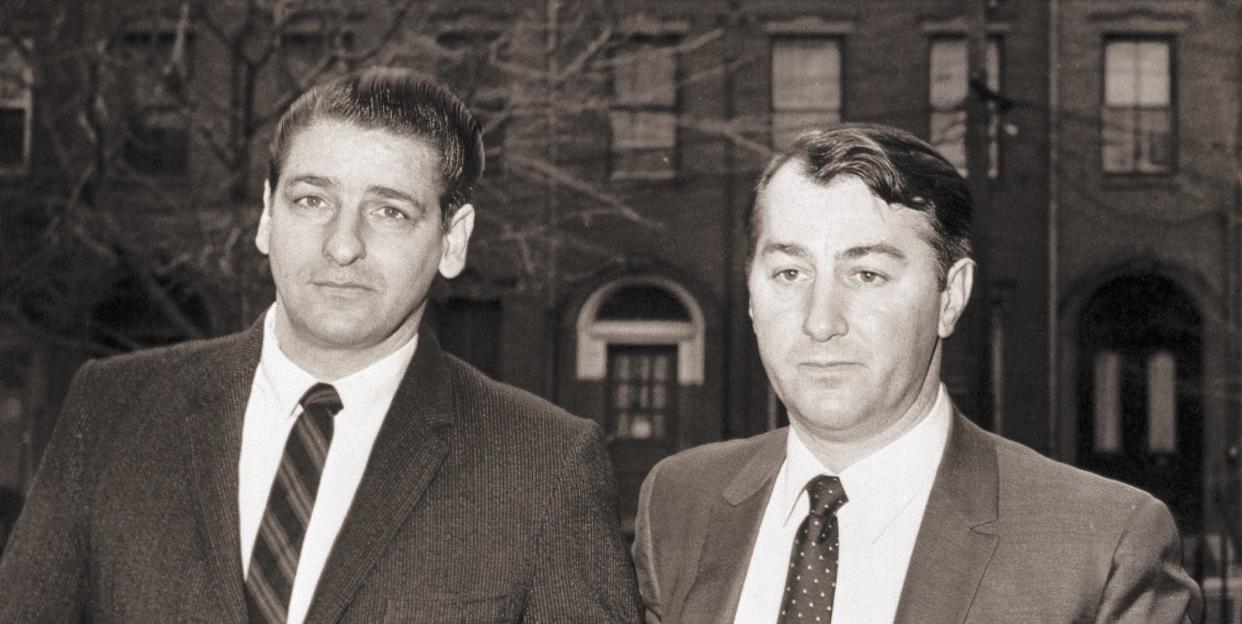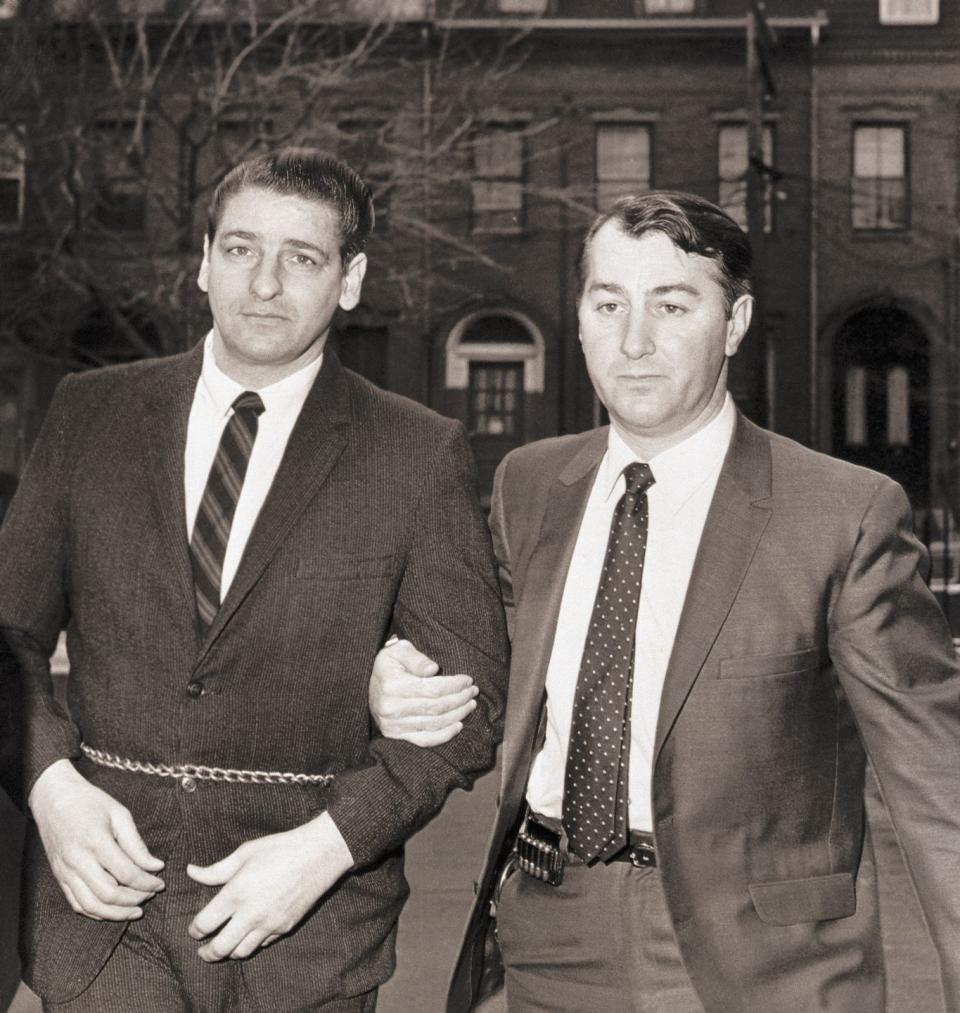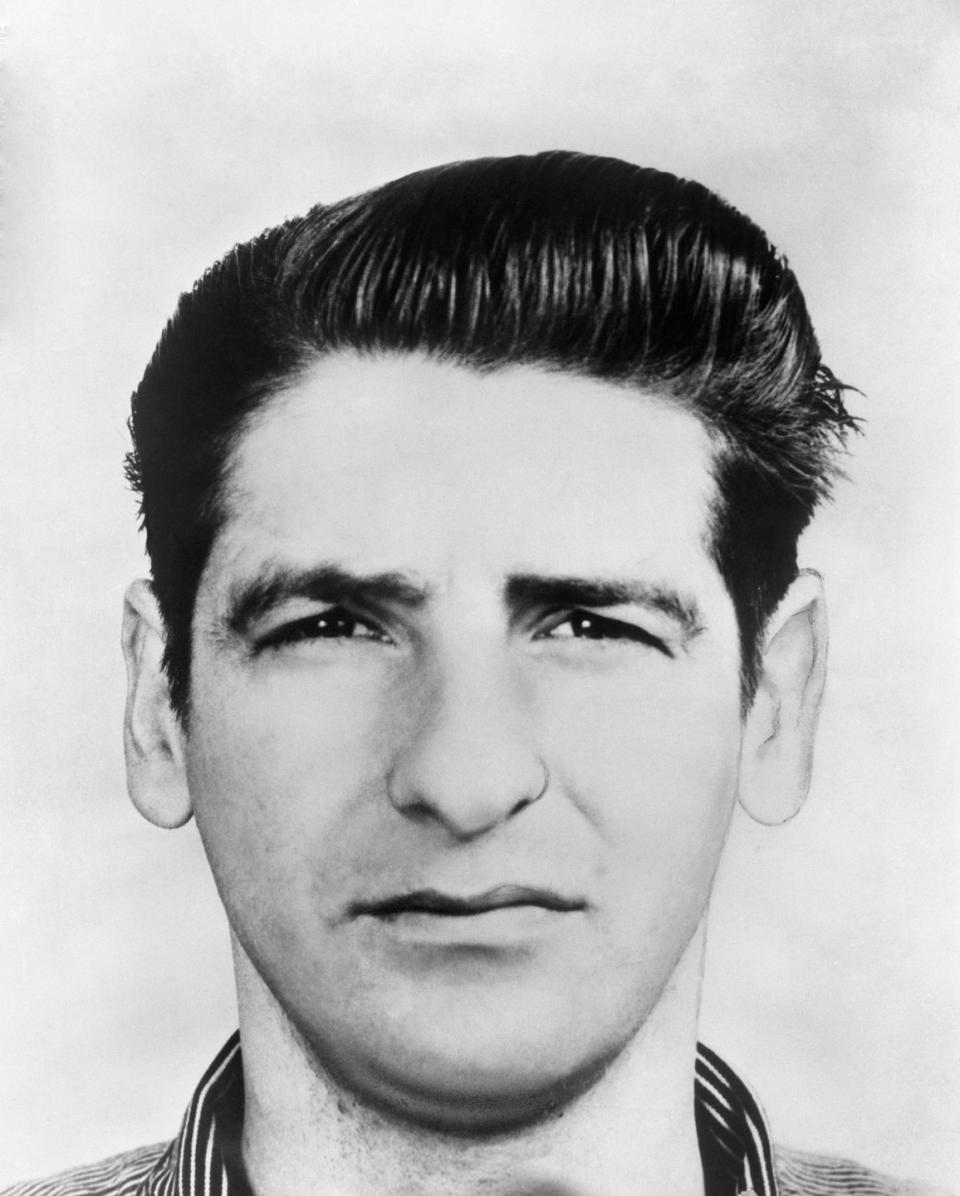Why Wasn’t Albert DeSalvo From Boston Strangler Prosecuted for the Murders?

"Hearst Magazines and Yahoo may earn commission or revenue on some items through these links."
Content warning: This article contains references to murder and sexual assault some may find upsetting. Reader discretion is advised.
Hulu’s Boston Strangler, the streamer’s latest true crime film, follows the chilling story of the notorious serial killer who terrorized Boston in the early 1960s, and the two Record-American investigative reporters, Loretta McLaughlin and Jean Cole, who discovered the connection between the assailant’s crimes.
Between June 1962 and January 1964, 13 women in and around Boston were found sexually assaulted and strangled to death with cords, ropes, or articles of clothing in their homes, according to The Boston Globe. The Boston Strangler, as labeled by McLaughlin and Cole in their reporting at the time, targeted single women aged 19 to 85. Law enforcement believed that multiple assailants were responsible for the murders, according to The New York Times, but McLaughlin and Cole’s investigative work helped link the murders and point to one possible killer.

In the mid-1960s, Massachusetts native Albert DeSalvo confessed to the murders of 13 women. At the time, DeSalvo was an inmate at Bridgewater State Prison for a separate string of crimes, including burglaries and sexual assault against four women, according to The New York Times. But DeSalvo was never tried or convicted for the stranglings, and before his death in 1973, he recanted his confession, according to USA Today.

Why wasn’t Albert DeSalvo prosecuted for the stranglings?
Although he confessed, DeSalvo was never prosecuted for the gruesome murders related to the Boston Strangler. According to The New York Times, DeSalvo confessed to the stranglings during a mental evaluation with Dr. Robert R. Mezer for the court case tied to the aforementioned, unrelated crimes. “DeSalvo told me he was the strangler . . . He told me he strangled 13 women . . . and he went into details of some of them, telling me some of the most intimate acts he committed,” the psychiatrist said during the trial, per the outlet.
But due to a lack of physical evidence, DeSalvo wasn’t charged or convicted for the Boston Strangler murders, and before his death in 1973, he recanted the confession. Still, he was sentenced to life in prison in January 1967 for “armed robbery, assault, breaking and entering and sexual acts,” the Boston Herald reported.

“With DeSalvo sentenced to prison for life, with an appeal to a higher court pending, and with the convicted man already in a mental hospital of the maximum security type as Bridgewater, it is doubtful that any prosecutor in the three counties involved — Suffolk, Middlesex and Essex — will take immediate steps to indict DeSalvo for the stranglings, in the opinion of most legal observers,” the outlet continued.
Before he claimed to be the Boston Strangler, DeSalvo was known as the “Measuring Man.” In 1960, DeSalvo went door-to-door under the guise of a talent scout, telling women he worked for a modeling agency and wanted their measurements, according to People. As he measured, he would fondle the women. He was arrested in March 1960, and spent nearly a year in prison.
But after he was released, DeSalvo went off on a crime spree throughout New England. Dubbed the “Green Man,” because he’d always be dressed in green, DeSalvo would break into women’s homes and sexually assault them, History.com reports.

His crimes came to an end when he was arrested in November 1964 for the “invasion of apartments of women in Arlington, Cambridge, Melrose, and Wakefield,” the Boston Herald reported. Then, on November 27, 1973, while serving his life sentence at Walpole State Prison, DeSalvo was stabbed to death by an unidentified inmate.
Nearly 50 years after the Boston Strangler murders, law enforcement recovered DNA that linked DeSalvo to the last strangling victim, Mary Sullivan. According to ABC News, Boston police retrieved his DNA from a water bottle left at a construction site by DeSalvo’s nephew and matched it with seminal fluid that was left behind at the crime scene in January 1964. Officials claimed that Sullivan’s DNA can be linked “with 99.9 percent certainty” to the late DeSalvo.
You Might Also Like